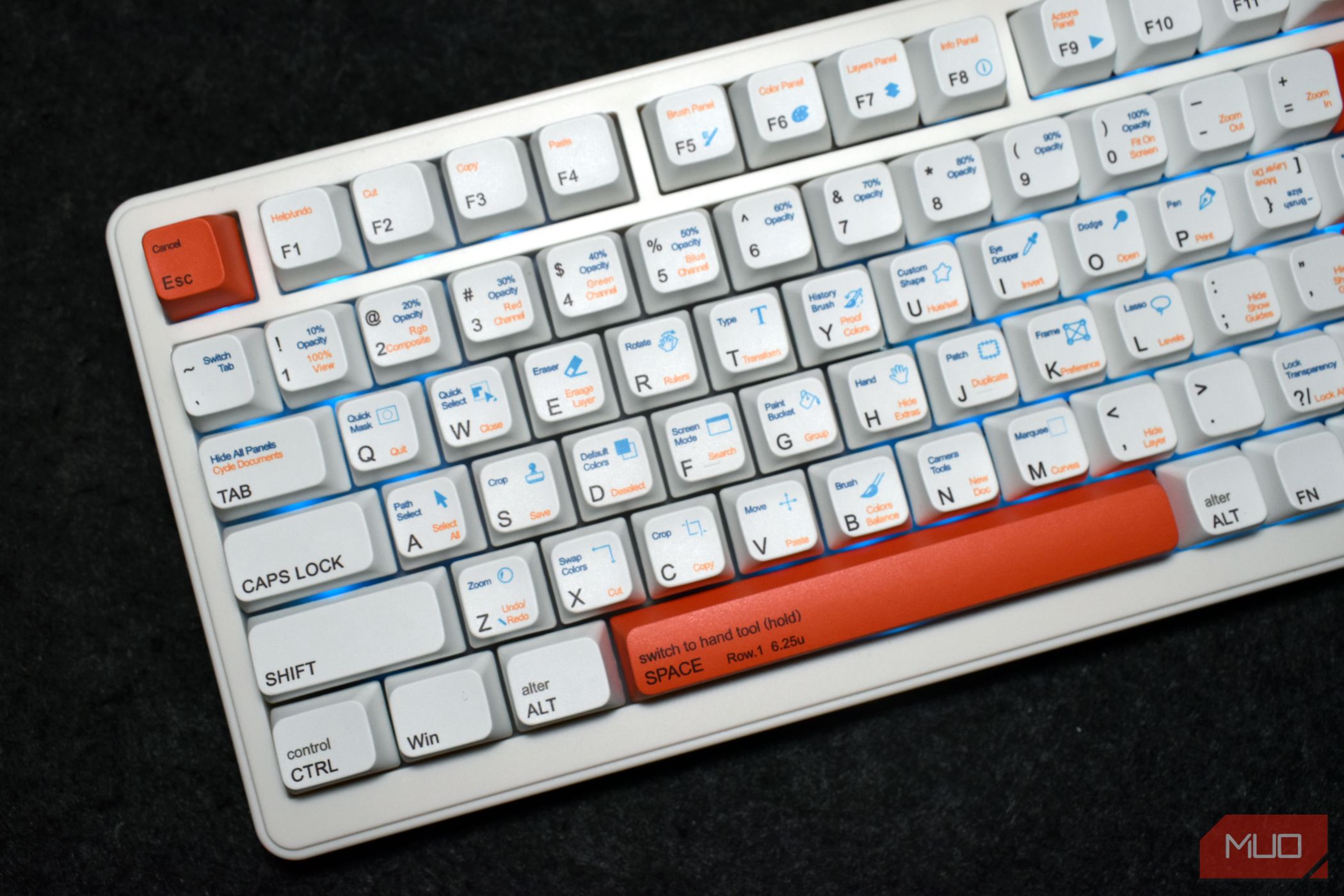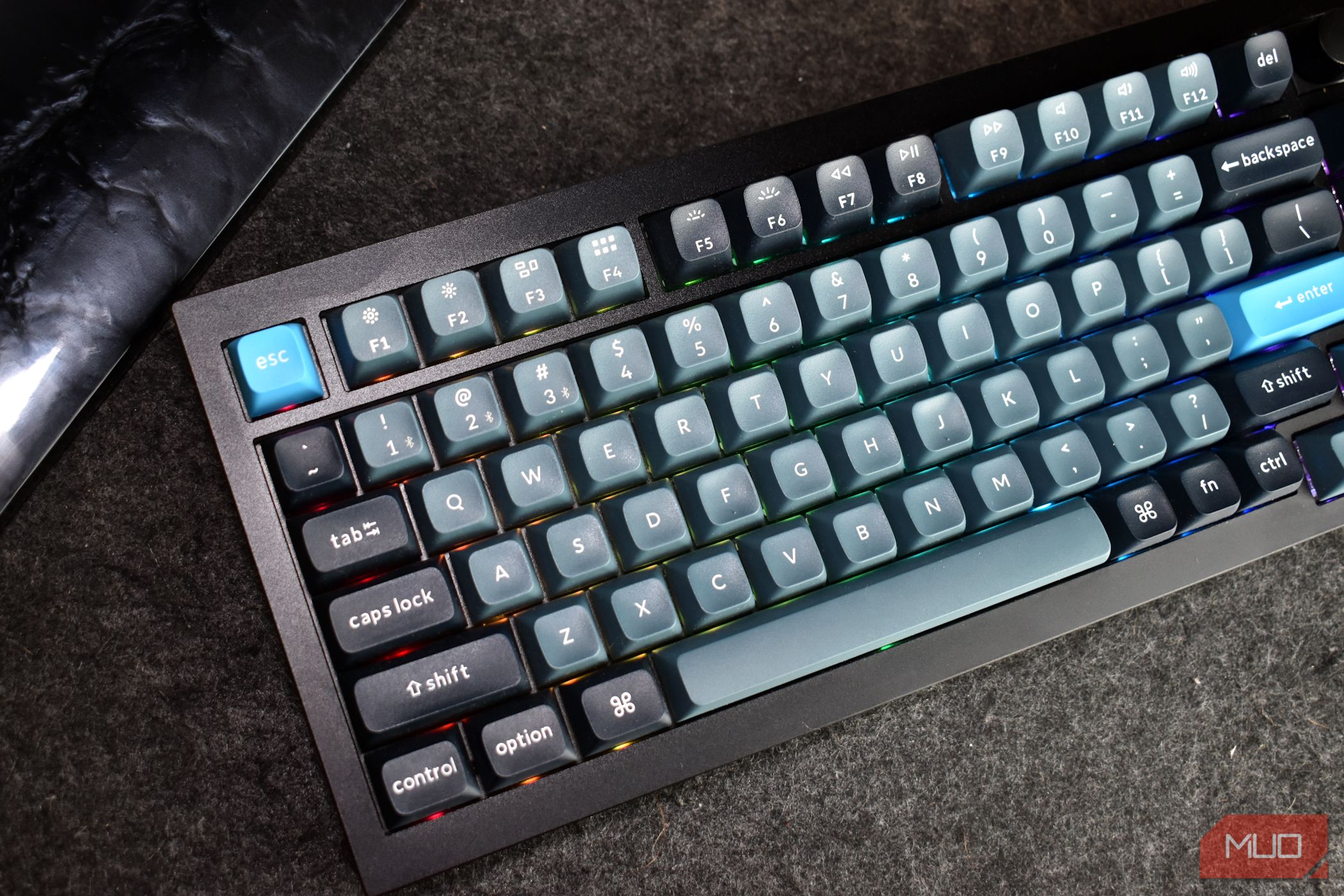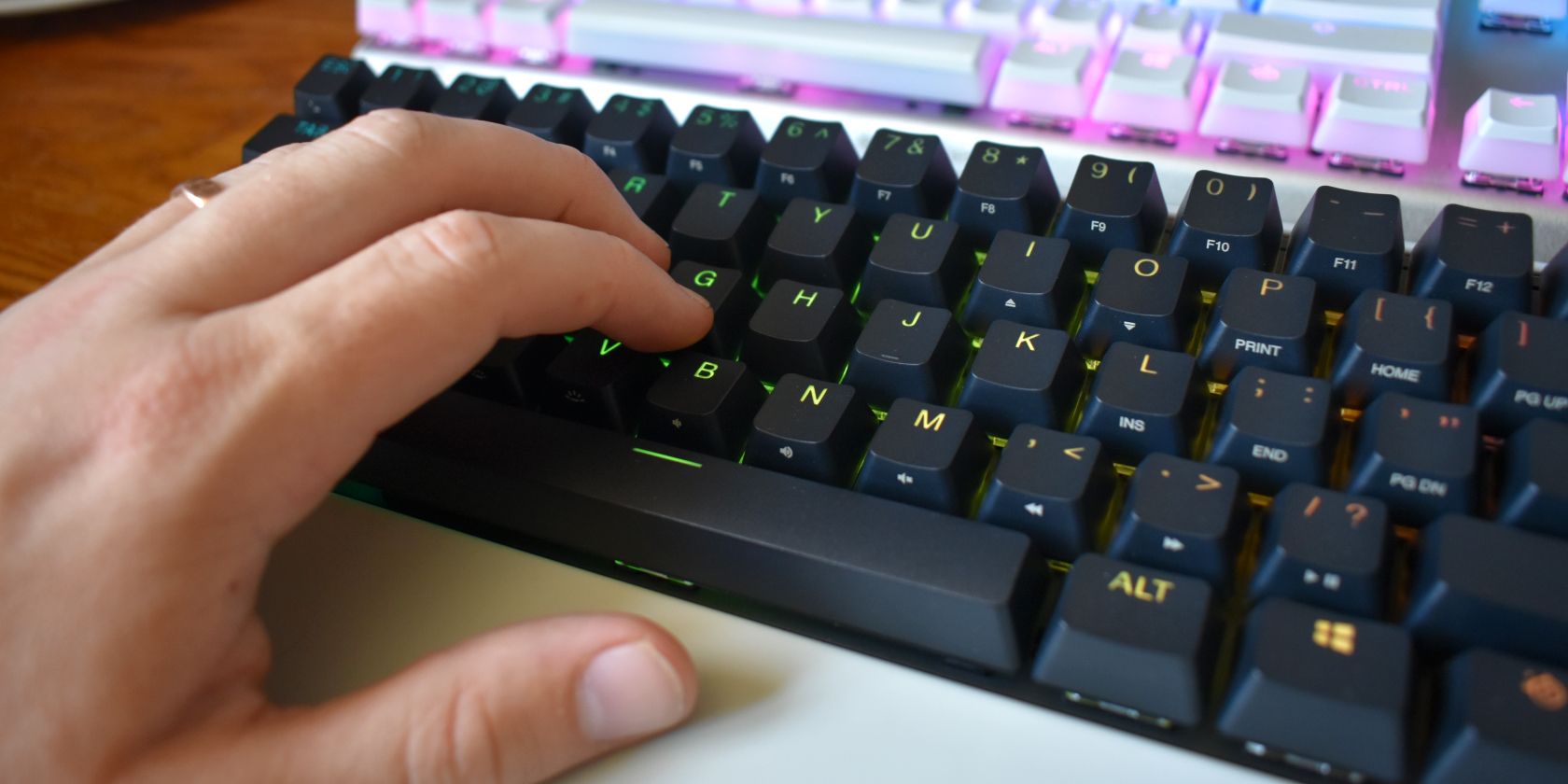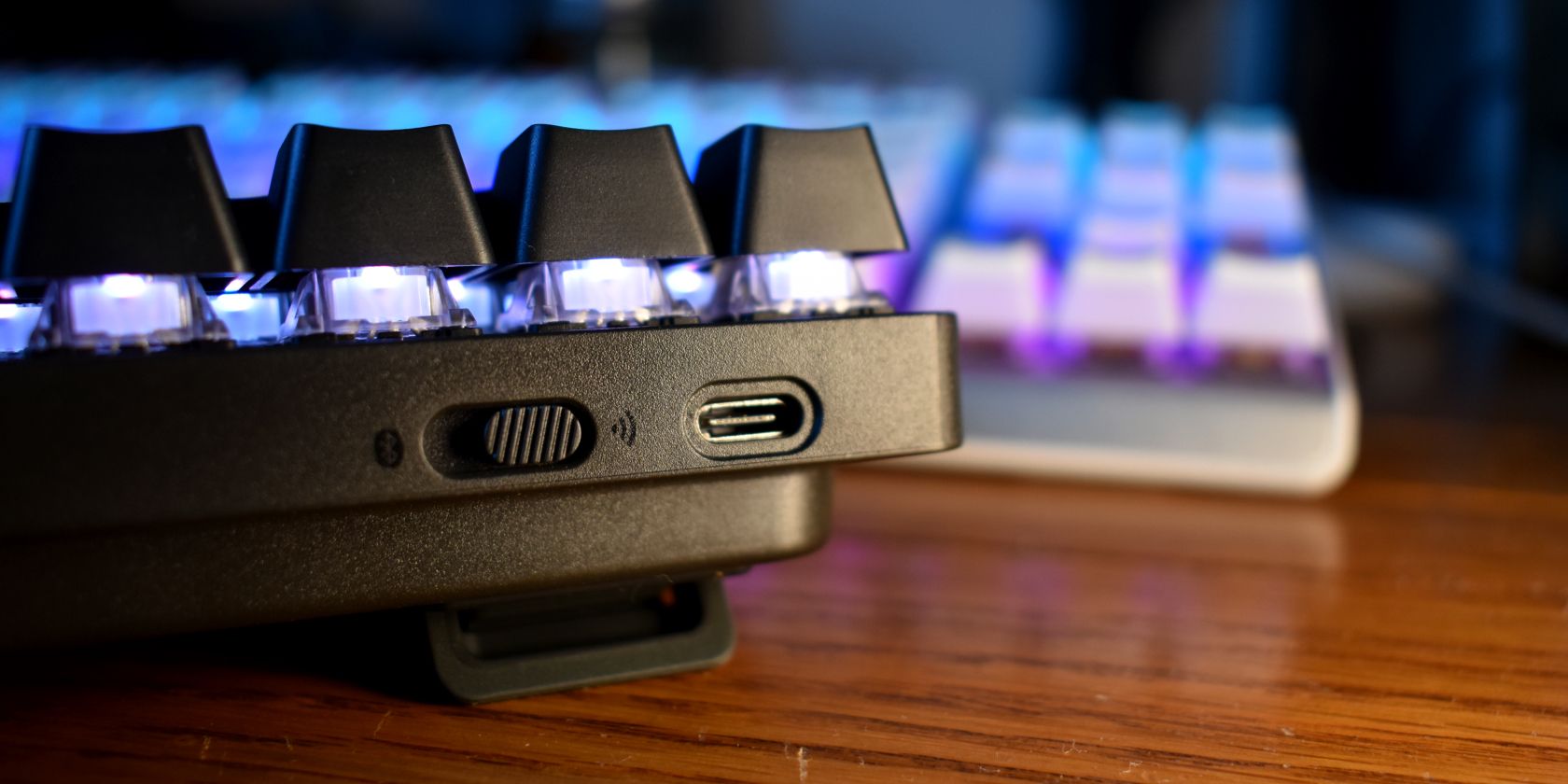Key Takeaways
- A higher keyboard polling rate leads to faster responsiveness and reduced input lag, making it important for gamers, especially those competing in fast-paced games.
- Gamers can benefit from keyboard polling rates of 500+Hz, while typical typing doesn't require extremely high rates.
- Wired keyboards generally achieve higher and more consistent polling rates compared to wireless keyboards, although modern wireless gaming keyboards can still have high polling rates of 500Hz or 1,000Hz.
Ever wondered if your keyboard could understand your keypresses quicker? Well, you might be surprised to find out that it can.
Keyboard polling rate refers to how often your keyboard is queried for input. The higher the polling rate, the more frequently the keyboard will check if you're pressing a key, which directly affects the responsiveness of your keyboard.
But why does the keyboard polling rate matter to regular folks, and is a higher polling rate more important to gamers?
What Is a Keyboard Polling Rate?
Keyboard polling rate determines how frequently your computer checks for key presses. Like many measurements with computers, polling rate is measured in Hertz (Hz), which tells us how many requests are made per second. As such, a higher figure means your computer and keyboard communicate more frequently, and key presses are detected and registered rapidly.
For example:
- A keyboard with a 125Hz polling rate is queried 125 times per second, or every eight milliseconds.
- A keyboard with a 500Hz polling rate is queried 500 times per second, or every two milliseconds.
- A keyboard with a 1,000Hz polling rate is queried 1000 times per second, or every one millisecond.
A higher keyboard polling rate can reduce the effects of input lag, where there is a noticeable delay between your input and the key press registering on the screen.
Many modern gaming keyboards offer polling rates up to 1,000Hz, as this provides the fastest response times for competitive gaming. However, extremely high polling rates like 4,000Hz may be overkill for most users.
The standard polling rate used to be around 125Hz, but higher speeds like 500-1,000Hz have become more common recently. Choosing the right polling rate depends on your needs—fast-paced gaming benefits from 500+Hz, while typical typing doesn't require extremely high rates.
Does Keyboard Polling Rate Make a Difference When Gaming?
Yes, the keyboard polling rate absolutely relates to in-game performance. Well, perhaps not for mere mortals, but those that game even vaguely competitively will want faster keyboard polling rates where possible.
It makes sense; the faster your inputs are received and reacted upon by the keyboard and computer, the faster they are enacted in game. It could be the difference between dodging a shot in a competitive FPS versus getting taken down and losing the round.
As mentioned above, a higher polling rate reduces input lag. ESport professionals will use much higher polling rates than regular folks, with some keyboards offering up to 4,000Hz (0.25ms) and some even ramping up to 8,000Hz (0.125ms).
Still, most regular folks can compete just fine with a 1,000Hz polling rate. A 1,000Hz polling rate means your key presses are registered every 1ms, which is still incredibly fast. Furthermore, a 1,000Hz polling rate could provide a competitive edge over a keyboard polling at 500Hz, 250Hz, or 125Hz.
But nothing can replace actual in-game skills!
It's also worth noting that higher polling rates typically place more strain on the system CPU. An 8,000Hz polling rate requires extremely fast communication at a near-constant rate, which can lead to some CPU overhead.
Do Wired Keyboards Have Better Polling Rates Than Wireless Keyboards?
You do not necessarily need a wired keyboard to achieve a high polling rate. Many modern wireless gaming keyboards can also have high polling rates of 500Hz or 1,000Hz.
However, wired connections generally can more easily achieve higher and more consistent polling rates than wireless keyboards.
Here are some key considerations regarding polling rates for wireless keyboards:
- Wireless introduces some natural latency due to transmission times from the keyboard to the receiver. This can limit the maximum polling rate, though many wireless gaming keyboards have optimization techniques to minimize this.
- Wireless protocols like Bluetooth have limitations that may restrict polling rates to 125-250Hz. Some proprietary wireless protocols like Logitech Lightspeed or Razer HyperSpeed can reach 500-1,000Hz polling over wireless.
- Wireless keyboards that ship with a 2.4GHz USB dongle often support the higher 1,000Hz polling rate, though this is keyboard-specific.
- The battery life may be reduced at extremely high polling rates since the wireless keyboard requires more frequent transmission.
- There could be occasional polling rate inconsistencies or spikes with wireless when signal interference occurs. Wired connections are direct and thus more stable.
- Wired connections eliminate the battery requirement of wireless keyboards.
High 500+Hz polling rates are achievable in today's wireless gaming keyboards using advanced wireless protocols. However, wired keyboards may offer slightly more consistent and maxed-out polling rates for competitive gamers who want every last bit of responsiveness.
If you're gaming competitively, a wired keyboard is always the best option (that goes for your mouse, too).
How to Check Your Keyboard Polling Rate
Now, it's all very well and good knowing you need a higher keyboard polling rate, but how do you check the keyboard polling rate to begin with?
Thankfully, there are several ways to check the keyboard polling rate.
- Keyboard Software: Many keyboards come with companion desktop software. Depending on the software, you may find a specific section dedicated to adjusting and checking your keyboard polling rate, like Razer Synapse, Logitech G Hub, Corsair iQue, and so on.
- On-Board Switch: Some keyboards have a physical switch that lets you change the keyboard polling rate. Check if your keyboard has this switch, typically found at the device's rear.
- Third-Party Software: Numerous third-party apps are designed to track and test keyboard polling rates. For example, free and open-source Keyboard Inspector can detect your keyboard polling rate in seconds using its test mode, and it's incredibly simple to use.Note that the above tool is for Windows and Linux. This handy Reddit post explains how to check the keyboard polling rate on Linux using the command line.
- Manual Calculation: If you don't have any of the above tools to hand and can't get hold of them or use them, a manual keyboard polling rate check might suffice. However, it's not particularly accurate. To measure the keyboard polling rate manually, open a text editor, then set a ten-second timer. Hit go on the timer and press a key as many times as possible. Divide the number of keypresses by the time, and you'll get a very, very rough estimate of your polling rate.
The manual option exists, but you're much better off using one of the other methods to track your keyboard polling rate.
Which Keyboards Have the Highest Polling Rates?
Currently, there are a few keyboards with an 8,000Hz polling rate:
- Razer Huntsman V2
- Corsair K70 RGB Pro
- Corsair K100
- Asus ROG Strix Flare II Animate
- Razer BlackWidow V4 Pro
Note that this is just a handful of options, and other keyboards offer an 8,000Hz polling rate. It's also worth remembering that 8,000Hz is the highest polling rate offered by these keyboards, but it's not the only rate. You can set each of these keyboards to a regular polling rate like 1,000Hz using on-board controls or desktop software.
1,000Hz Is More Than Enough
The idea of an ultra-fast polling rate sounds good, but in reality, it's overkill for most folks. Even when accounting for key press times and switch bounce back, a 1,000Hz keyboard polling rate should be more than enough to register key presses with accuracy.
With that said, the 8,000Hz keyboard options above give you options at the very peak of polling rates, should you need them.





